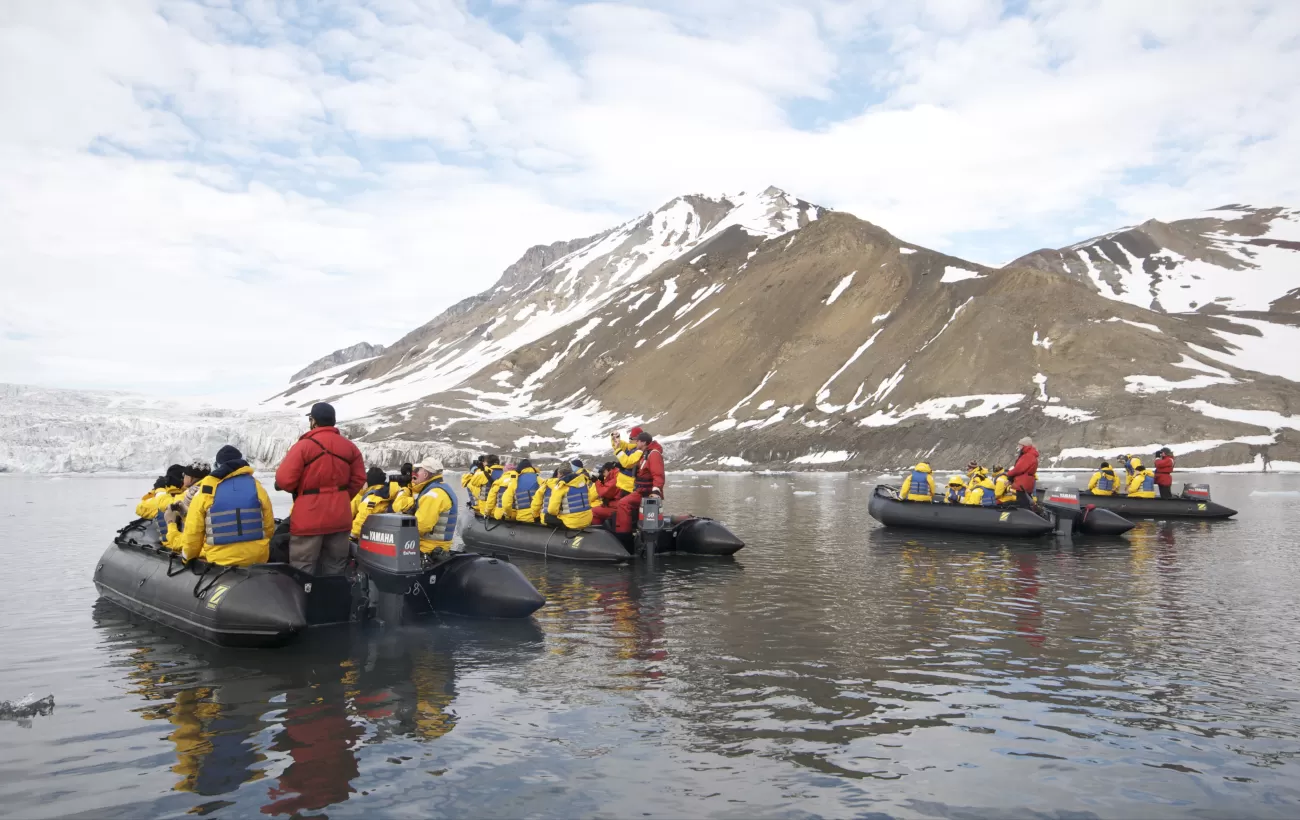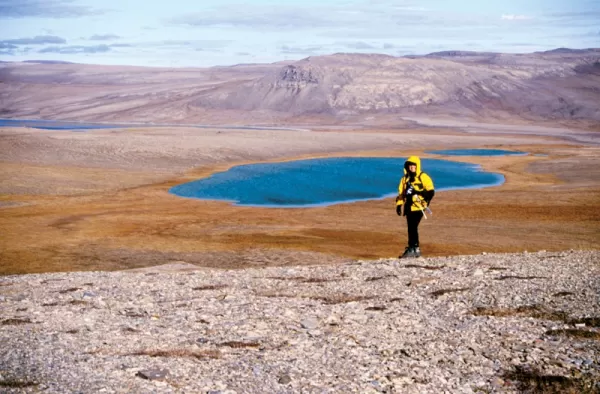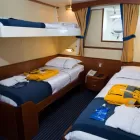Visit towering fjords, historical sites and traditional Inuit communities as you follow the footsteps of famous explorers from long ago in the Canadian High Arctic.
Tour the Uqqurmiut Centre for Arts & Crafts, watch craftspeople in the tapestry studio and pick up a limited-edition print. A must for visitors, a colorful Pang hat keeps you warm during the remainder of your arctic voyage. Afterwards, visit nearby Kekerten, an uninhabited island that was a major whaling destination in the 1800s.
Go ashore for a hike at Cape Mercy, named by British explorer John Davis (yes, he of the Davis Strait), who sailed through it in 1585. As icebergs travel down the Davis Strait, they’re naturally trapped at Qikiqtarjuak (formerly known as Broughton Island), the iceberg capital of the world. The icy waters here are sometimes also home to narwhals, beluga and right whales, and ring and harp seals. A hike up to the hilltop inukshuk (a stone figure made by the Inuit) rewards with spectacular views of the community.
Cruise farther north along the east coast of Baffin Island and approach Isabella Bay, an important summer and fall feeding area for a large population of bowhead whales.
Sail by the dozens of soaring cliffs of Sam Ford Fjord. One of the most isolated places on the planet, the big-wall playground attracts climbers eager to scale the sheer rock faces that shoot straight out of the sea.
Discover the picturesque hamlet of Pond Inlet, located at the northern tip of Baffin Island, near the eastern entrance to the Northwest Passage. Spend some time exploring this traditional Inuit community that’s surrounded by scenic mountains, fjords, glaciers and icebergs.
Visit the area around Lancaster Sound and enjoy several hiking opportunities. At Dundas Harbour, on Devon Island, visit an abandoned beachside outpost of the Royal Canadian Mounted Police. At nearby Croker Bay, cruise in a Zodiac (at a safe distance) along the face of an actively calving glacier. Your Expedition Team keep its eyes peeled for the muskoxen and walrus that are known to visit the bay. A hike to a nearby archaeological site is another possible excursion. Farther west, some of the best ancient Thule remains in the Arctic are at Radstock Bay, beside the soaring Caswell Towers, a polar bear observation site.
At the western end of Devon Island, the windswept Beechey Island might be small, but it’s steeped in history. Named after famed British explorer Frederick William Beechey, it’s a Canadian National Historic Site. Visit the small marked graves of three crew members who died during Sir John Franklin’s tragic 1845–46 expedition. Roald Amundsen landed here in 1903, during the first successful voyage by ship through the Northwest Passage.
Sail down the east coast of Somerset Island and have a chance of spotting beluga whales and narwhals, as they feed on the large numbers of arctic char that enter Creswell Bay in late summer. An important bird area, the bay also attracts such species as black-bellied plovers, king eiders and white-rumped sandpipers. Afterwards, explore Fort Ross, where the Hudson’s Bay Company established a now-abandoned trading post in 1937. At the midpoint of the Bellot Strait, a narrow channel that separates Somerset Island from mainland North America, reach the northernmost area of the continental landmass, Zenith Point.
























